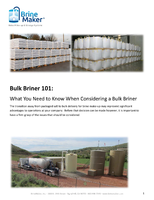Innovative, High Performance Catalyst/Silencer Design for 1,200 - 2,500 HP Natural Gas Engines. One-size-fits-all Catalyst Elements Allow Higher Performance with Lower Backpressure
MIRATECH Corporation has introduced the ZCS/ZHS product line, a combination catalytic converter and silencer for 1,200 - 2,500 horsepower natural gas engines.
"ZCS/ZHS is a unique design that incorporates a one-size-fits-all catalyst element into a system of multiple element tracks that let end-users precisely size the amount of catalyst required for their application," says MIRATECH VP of Sales, Marketing and Engineering Bill Clary. "The design also allows the addition of more catalyst elements with a decrease in engine back pressure, even at 99% CO reduction," Clary adds. The new MIRATECH housings offer an advanced silencer technology with two levels of noise abatement. ZCS units offer an insertion loss of 22-29 dBA. When more noise reduction is needed ZHS units deliver as much as 27-35 dBA insertion loss for silencing.
MIRATECH's initial ZCS/ZHS product offering were designed around three Caterpillar lean burn gas engines (Cat models 3516, 3606 and 3608) however Waukesha, Cummins and Jenbacher rich burn and lean burn engine models can also utilize this design according to Clary.
One Size Fits All Element Solves Stocking Problems VORTEX Substrate Means Better Element Strength and Catalyst Performance
At the heart of the ZCS/ZHS system is a one-size-fits-all rectangular catalyst element that is used in all of ZCS/ZHS housing configurations. The Z series element configurations let end-users reach the precise catalyst volume needed to achieve pollutant reduction requirements. "A single-size catalyst element means less stocking requirements of different catalyst sizes for our customers," says MIRATECH Sales Director, David Zenthoefer. "Now customers can easily have one-catalyst in stock that fits all sizes of housings - or simply take advantage of same-day shipment of replacement elements from MIRATECH inventory," he adds.
ZCS/ZHS elements use MIRATECH's new rectangular VORTEX substrate. (A catalyst substrate is the support material upon which the catalyst precious metals are applied.) VORTEX is a corrugated foil substrate layered and stacked in an off-setting, overlapping, angle-channel pattern where each overlap point is electrically resistant welded. VORTEX is an important improvement in substrate design that provides users with two primary benefits. VORTEX gives industrial engine operators greater catalyst element strength for resistance to telescoping. VORTEX also increases exhaust flow turbulence to boost catalyst performance and efficiency with no increase in backpressure.
"Catalyst efficiency and performance comes from turbulence in the exhaust flow," explains Bill Clary. VORTEX improves turbulence through a static mixing design that achieves a high Turbulence Factor - the percent of turbulence across the length of the substrate - he says. The angled overlapping channels create a tortuous patch for the exhaust that results in turbulent air-flow through the entire length of the VORTEX substrate. "This increased turbulent exhaust flow gives VORTEX higher catalyst performance than other substrates," says Clary. "That means less catalyst is needed to achieve reduction targets - such as CO and formaldehyde for oxidation catalysts."
VORTEX's superior strength and durability is a function of the design that also creates its increased turbulence. The off-setting angled channel pattern provides many thousands of electrical resistant weld-points make VORTEX elements stronger, longer-lasting and more durable than elements using traditional straight-line flow substrates.
Safer Element Handling
Catalyst elements used for engines of this size can weigh more than 50 pounds each. For those who must install and replace them safety and ease of handling is a primary concern. MIRATECH made easy and safe element handling a high design priority for its ZCS/ZHS product. "Some element loading systems for these types of engines require handlers to push heavy elements into place at an upward angle against-gravity into a complicated mechanical latching system," says Clary.
Z series element removal and installation uses no moving parts or complex loading apparatus and Z series elements can be inserted into place horizontally or angled for gravity-fed insertion from above. When combined with MIRATECH's patented "easy-grab" Y-Top, the Z series element protects workers from injury and makes element handling safe, quick and simple.
Patented Y-Top Element With Perimeter Gasketing Prevents Leaks
MIRATECH's ZCS/ZHS housing and elements are designed to prevent exhaust leakage or "blow-by." Each element's entire perimeter is gasketed. Each element is inserted and firmly sealed in a housing channel designed with superior structural support and sealed with a gasketed cover plate. "For the Z-series we incorporated our patented Y-Top element design with perimeter gasket sealing now in use in our IQ housings and catalyst elements" says MIRATECH Engineering Manager, John Sartain. "The Y-Top virtually eliminates blow-by and leakage. It's one reason we're so successful in meeting the toughest emission standards in the nation in California," Sartain adds.
MIRATECH Corporation is headquartered in Tulsa, Oklahoma and provides engine emissions solutions to customers in Power Generation and Gas Compression markets in North America. The company is one of few reciprocating engine emission control firms to combine both U.S. based sales with service and technical support.
Jeff Porter
Industrial Marketing Consultant
ThomasNet.com
405-826-4837
918-512-4541 - fax
jeff@tnetweb.com
www.thomasnet.com




